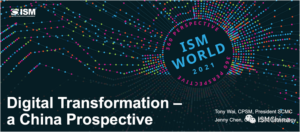
Since March 2020, apart from my full-time job at ESiC, I have also taken on another important task, which is to join the newly established Digital Transformation Committee (DX Committee) of ISMCHINA. Together with twelve purchasing professionals from various enterprises, I formed a volunteer team to conduct a research project. The project aims to study the process, driving forces and obstacles, new technologies used, actual benefits, and the impact on our purchasing profession and skills of the digital transformation of procurement in Chinese enterprises.
Our research methods include questionnaire surveys, interviews, benchmarking, and finally form insights. We then establish a sharing platform on ISMCHINA to share the project journey, the knowledge and best practices we have gained. After all, digital transformation is no longer something to be ignored.
The investigation and report took over three months. With the efforts of the team, it was finally completed. This report is shared with those who have helped us, responded to the questionnaire, and are concerned about the digital transformation of procurement. We hope this report will be helpful to you. Welcome to continue following our subsequent interviews.
The ISMCHINA public account will officially release our report. The link to the report is provided at the end of this article.
*Report on Behind-the-Scenes Details: (This section is dedicated to our project team as a token of remembrance, recognition and encouragement)
During the process of preparing this survey report, we received guidance from Tony Wai, Leonard Fok and Lou Zhou, the directors of ISMCHINA.
Thank you, Lisa, for leading the design of the questionnaire. Lisa’s meticulousness and conscientiousness have left a deep impression on me. This questionnaire received many favorable comments on its professionalism during the trial release stage. Although we discovered the limitations of the questionnaire in the subsequent analysis, it is still an excellent questionnaire.
Thanks to the joint efforts of the team, we not only spread the questionnaire widely on social media, but also distributed it in various professional groups. After finding that the responses were not satisfactory, we then switched to targeted distribution, sending one by one to the professionals and managers who we believed would find the questionnaire helpful; finally, we received 207 responses.
We would like to express our gratitude to all the friends who filled out the questionnaire. Your time and responses are the greatest support we have received. We also hope to reciprocate the benefits of this project and share the gains together.
After the questionnaires were collected, the first question was how many responses were sufficient? For this purpose, we conducted a small-scale research. On MonkeySurvey, there was an explanation for this question. We trusted MonkeySurvey’s professionalism. Although 207 responses were not the perfect number, it still met the basic needs for report analysis and forming insights.
The next question is, how should the data be analyzed? Anna and Sophie are in charge of the data analysis. After the team sorted out the ideas for data organization and analysis, they classified and organized the huge data table into structured data. On this basis, we can analyze and form insights. Anna told me that this experience has enabled her to have a deeper understanding of how to conduct data analysis!
George said, “Let me handle the analysis of the new technology!” I’m glad to have George in the team. Thanks to him, our insights on the new technology are quite profound.
What I have to mention is Taylor, a freshman student studying at Washington University in St. Louis. He made quite profound suggestions on data analysis methods, which helped in the creation of the initial version of the report and thus shaped the overall structure and style of our report. One thing that struck me is that one should never underestimate young people!
We began to analyze the classified data and form insights. Frank told me that the biggest feeling was that it was really not easy for consulting firms to produce reports. Haha, we are not consulting firms; we are a volunteer team.
Finally, there is one more feeling that I want to share. It is the professionalism of the team. We always use the weekends and evenings to discuss and work on the tasks. For the repeated data modifications and the careful review of PPTs, without the full-time time guarantee, it requires great patience and sometimes even frustration. Fortunately, we all persisted and thus this report was formed.
Here is the main content of the report that I have summarized for you:
Scope:
Among the 207 respondents in this survey, they are mainly from the purchasing departments and manufacturing fields, mostly in management positions, and the companies are mainly located in the eastern and southern regions of China. The conclusion drawn from the survey analysis is based on these 207 responses and is subject to the limitations caused by the data characteristics.
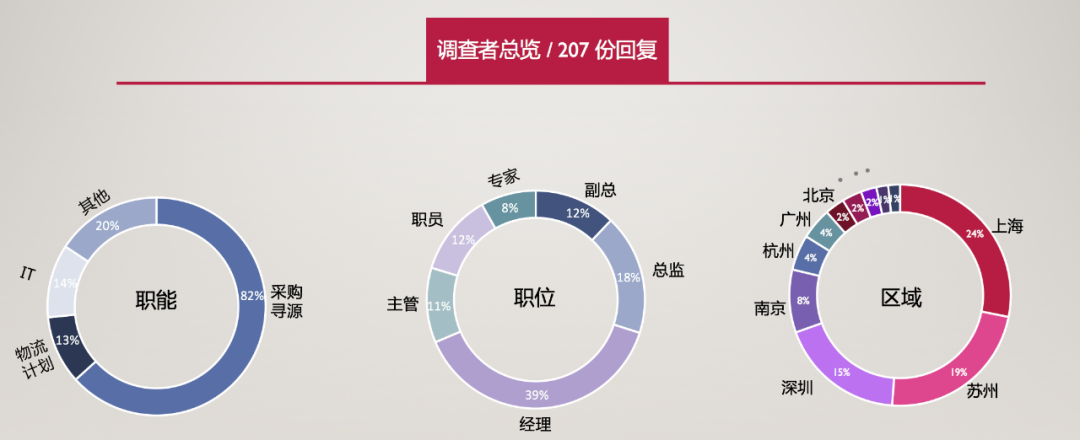
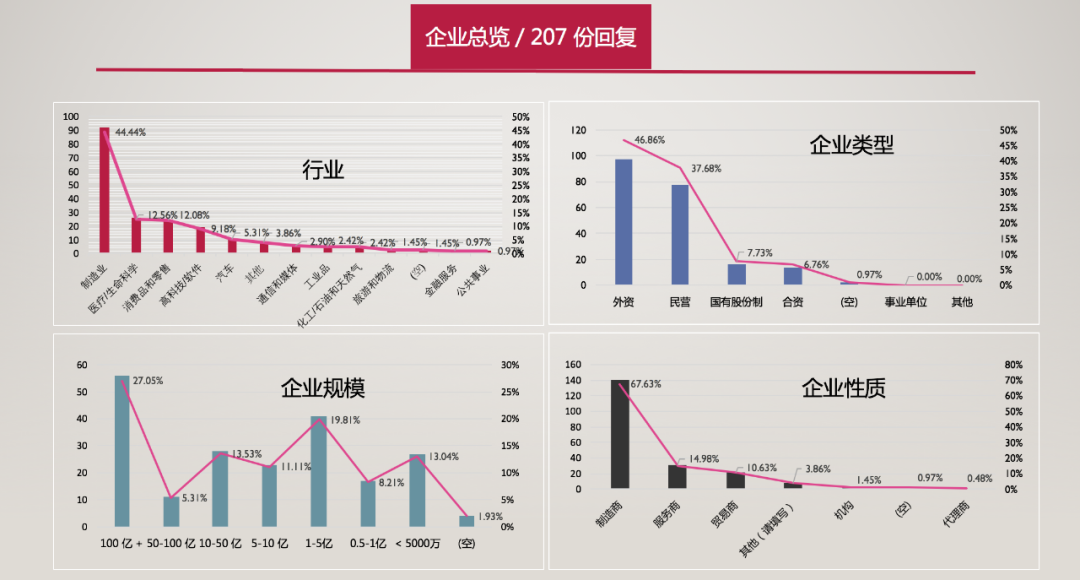
The questionnaire is intended to answer the following five questions:
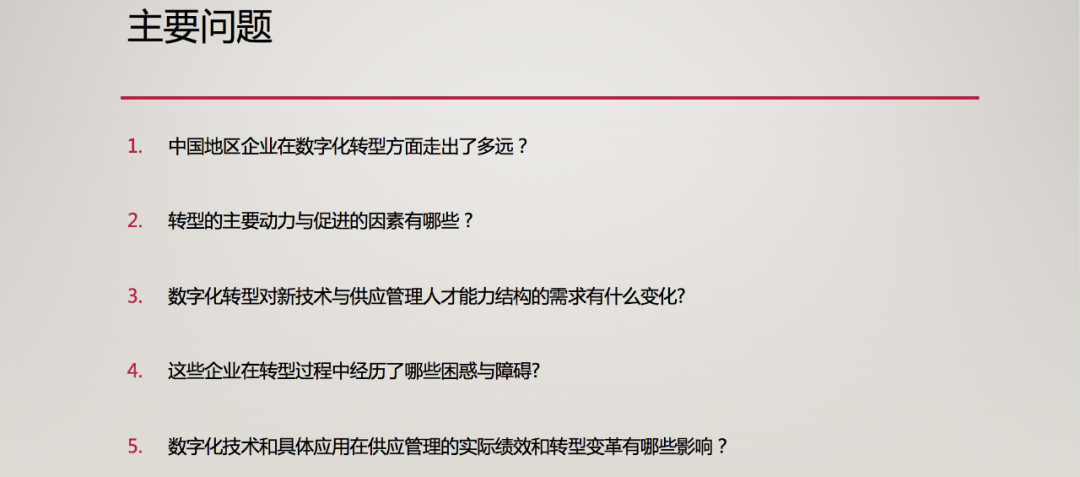
Key Takeaway:
The digital transformation of manufacturing enterprises in China is still in its infancy. Most companies have not truly implemented it or have not benefited from it in the process of digital transformation; only 15% of the respondents believe that the transformation has been very successful, and 50% of the successful cases come from foreign enterprises;
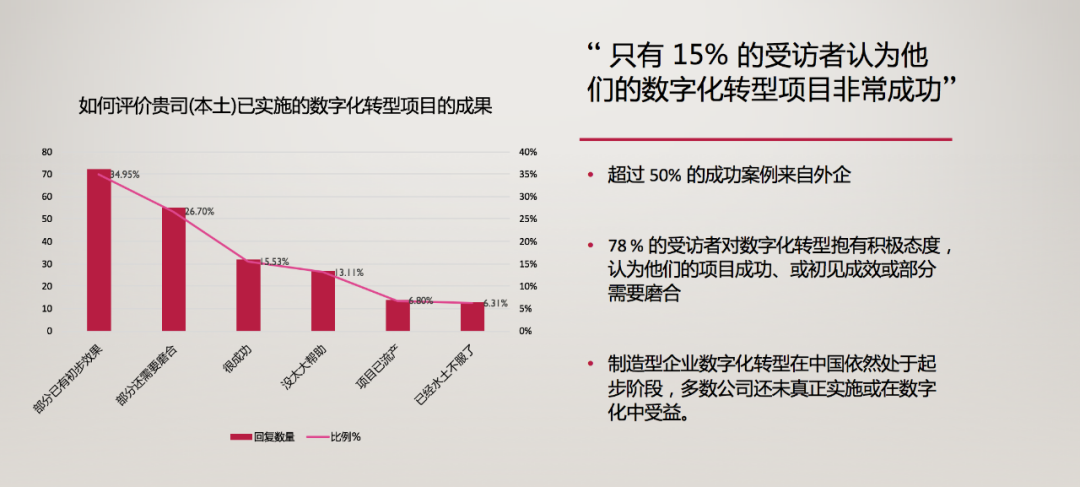
74% of the respondents believe that digital transformation means being efficient and agile, and having access to data insights; followed by process automation and standardization.
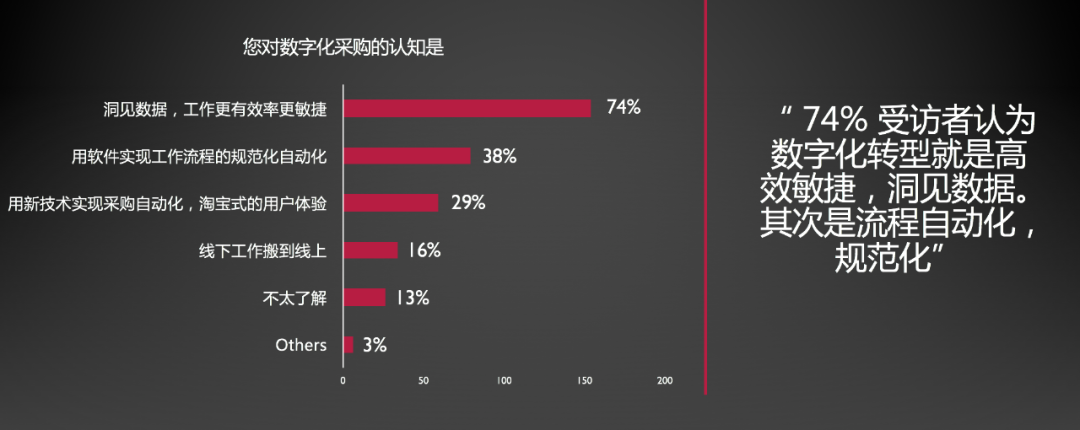
The procurement supply chain and manufacturing production fields are the vanguard of digital transformation for manufacturing enterprises.
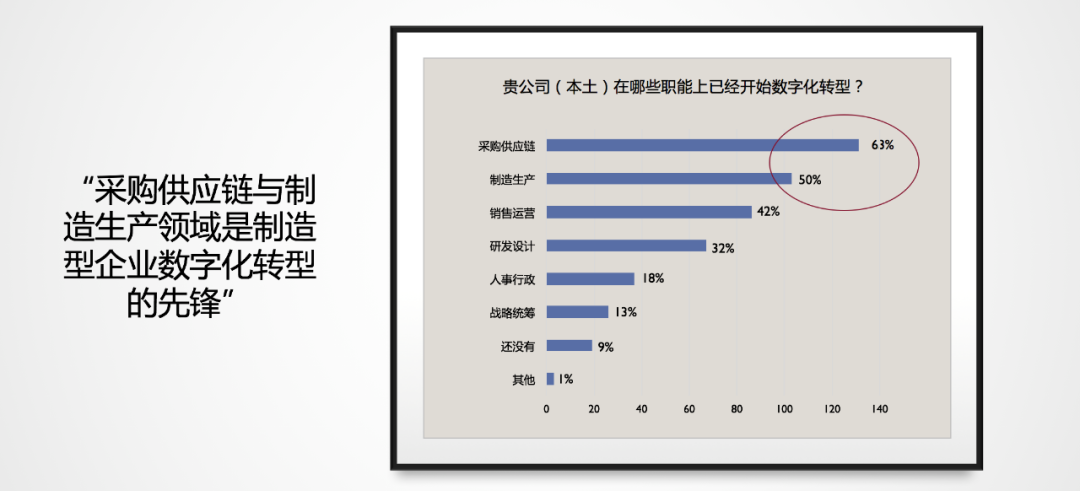
90% of the respondents hold positive views on digital transformation. Improving efficiency, integrating and gaining insights from data are the main driving forces behind digital transformation.
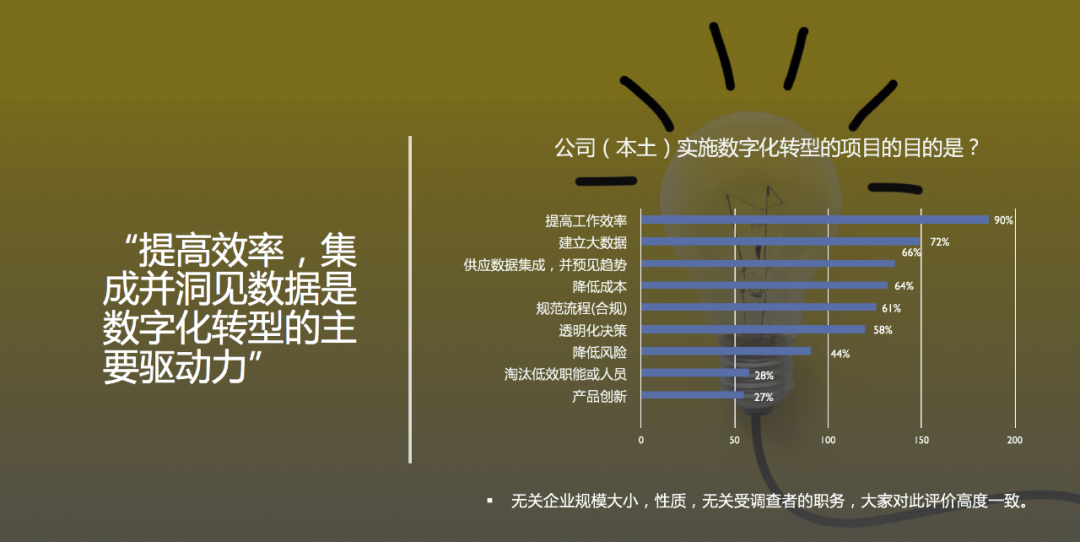 Establishing a dedicated digital transformation team and having clear project goals and strategies are the top three things that need to be done for digital transformation. Regarding the establishment of such teams, large companies are significantly more likely to have them than small and medium-sized companies, and foreign enterprises are more likely to have them than domestic ones.
Establishing a dedicated digital transformation team and having clear project goals and strategies are the top three things that need to be done for digital transformation. Regarding the establishment of such teams, large companies are significantly more likely to have them than small and medium-sized companies, and foreign enterprises are more likely to have them than domestic ones.
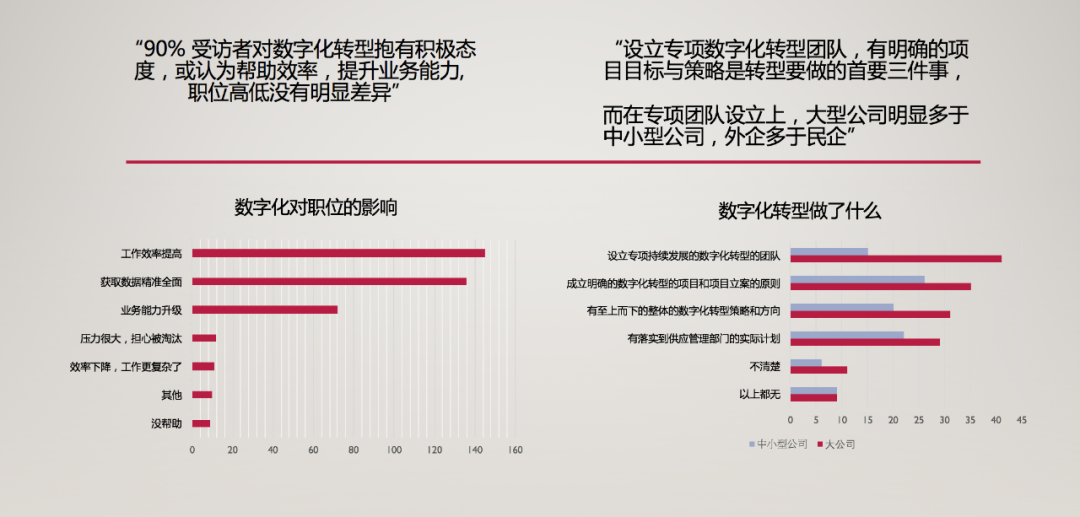
AI is the most popular new technology. However, it lacks successful implementation experience in the digital transformation of supply management. The success of new technologies in the future does not depend on technological leadership but on the practical implementation of new technologies. Starting from the same digitalization platform, it brings huge opportunities to enterprises.
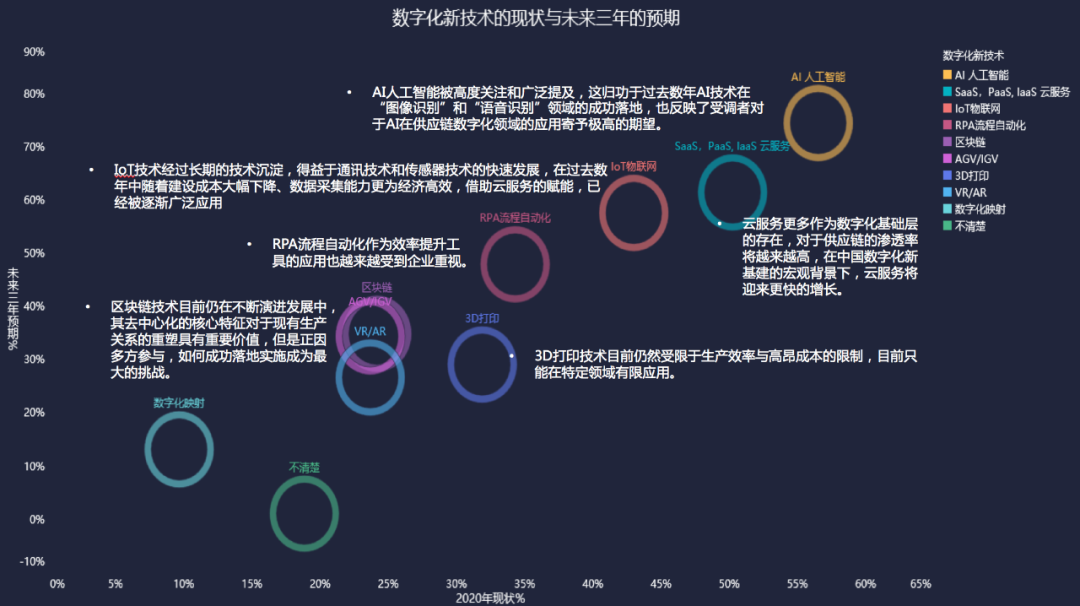
Most respondents believe that the main obstacle to digital transformation is the shortage of internal professional talents and knowledge, regardless of the size and nature of the company; the demand for digital transformation will give rise to a large demand for digital transformation professionals.
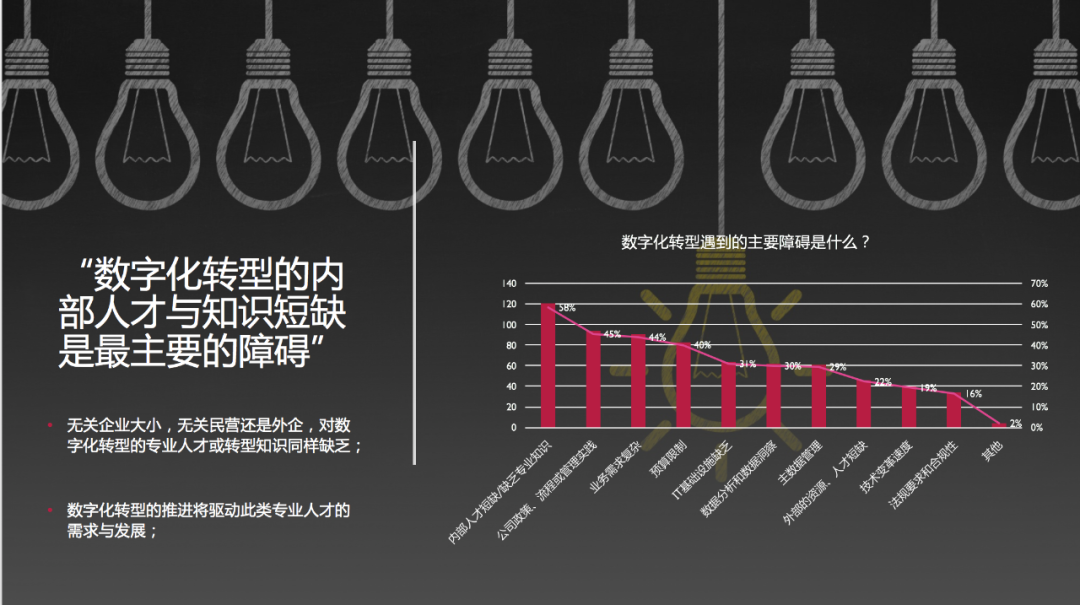
Procurement sourcing is the most dynamic area in the digital transformation of procurement, and supplier collaboration platforms and BI have better applications compared to other new technologies.
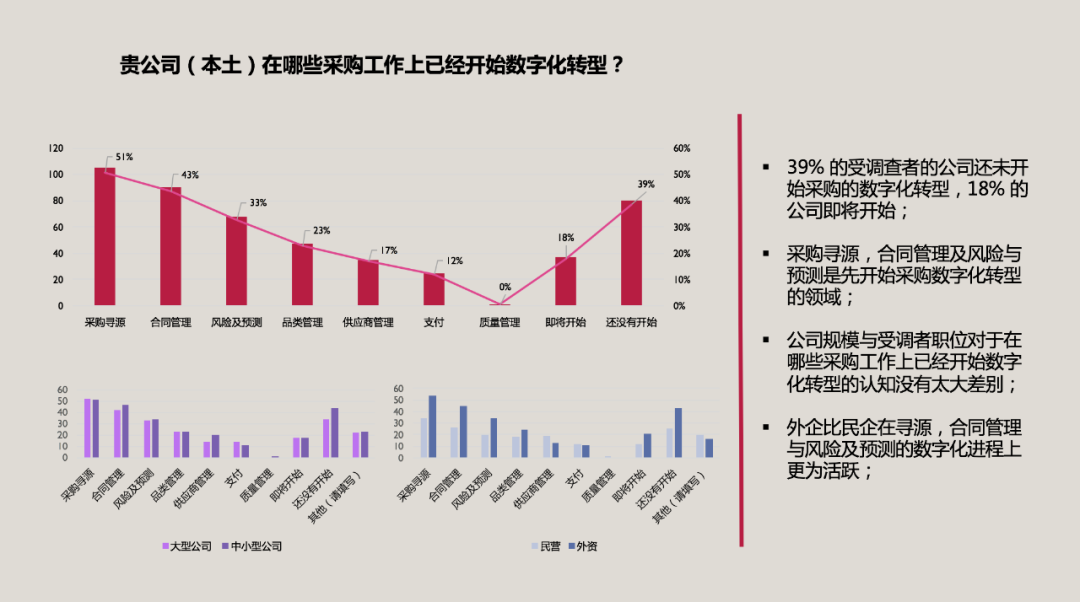 SAP is the preferred choice for large enterprises and foreign enterprises in China when it comes to digital procurement platforms, while Kingdee is the top choice for small and medium-sized enterprises and private enterprises. Chinese local providers of digital solutions for procurement are emerging and gradually gaining a larger market share.
SAP is the preferred choice for large enterprises and foreign enterprises in China when it comes to digital procurement platforms, while Kingdee is the top choice for small and medium-sized enterprises and private enterprises. Chinese local providers of digital solutions for procurement are emerging and gradually gaining a larger market share.
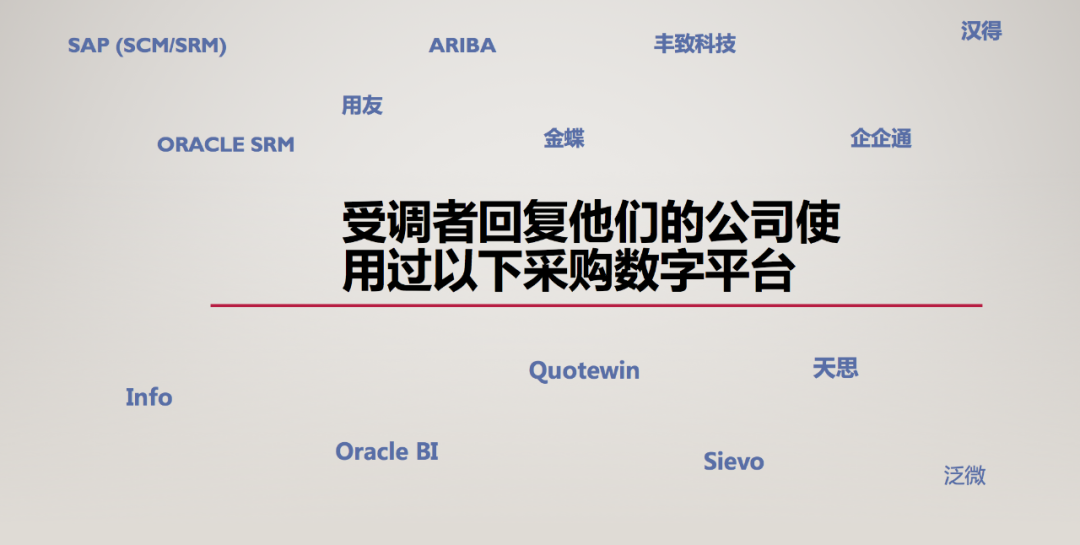
The responses of middle and senior managers to various issues related to digital transformation show a high degree of consistency.
Please click on the link to view the detailed investigation report.
ISMCHINA 2020供应管理数字化转型调研报告
Please keep following our interview reports on the successful companies in the next stage of digital transformation and more discoveries.
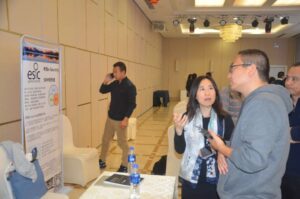







 Establishing a dedicated digital transformation team and having clear project goals and strategies are the top three things that need to be done for digital transformation. Regarding the establishment of such teams, large companies are significantly more likely to have them than small and medium-sized companies, and foreign enterprises are more likely to have them than domestic ones.
Establishing a dedicated digital transformation team and having clear project goals and strategies are the top three things that need to be done for digital transformation. Regarding the establishment of such teams, large companies are significantly more likely to have them than small and medium-sized companies, and foreign enterprises are more likely to have them than domestic ones.






